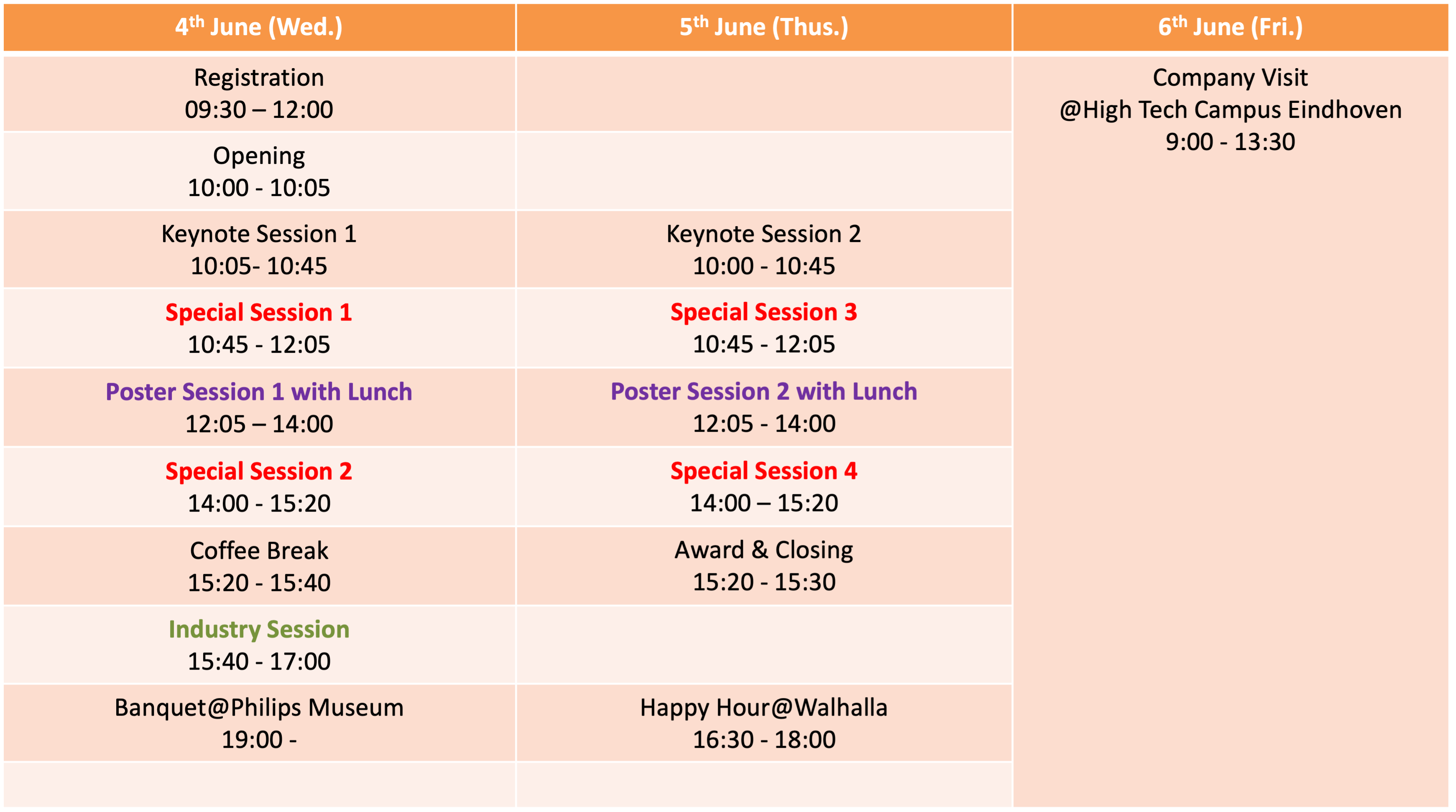KEYNOTE SESSIONS
Time: Jun. 4 (Wed.) 10:05-10:45 (Keynote Session 1)
Chair: Prof. Suguru Kameda, Hiroshima University, Japan
Title: BrightSites, the Connectivity Grid of the Future
Speaker: Ing. Guido Lamerichs, Signify BrightSites, Eindhoven

Biography:
Guido Lamerichs received the Master degree in Electronics Engineering in 1991 from Hasselt University, Belgium.
During 1991-2005, he first started at Philips Hasselt (Belgium) site as an R&D member for the Consumer Electronic business unit as product development engineer. After an initial 9-month period of developing and releasing a new custom digital ASIC for CD-recorder systems he transferred to the general R&D department (electronics engineering). There he has been working on consumer end products like CDI (interactive CD), CD-ROM and later DVB (Digital video broadcast) products like digital receivers as well as Bluetooth wireless products and various other audio/video and embedded systems.
Since 2005 he gradually moved into working for the System labs and research parts of Philips and later Signify (former Philips Lighting) for various internal venture organizations. With the function as hardware architect, he has been dealing with integration of textile and electronics starting with developing new technology and bringing this to successful businesses and end products.
During 1999-2001, he was a teacher at Temata (part of Catholic University Leuven, Belgium) for Bachelor candidate students teaching courses on networking and multimedia systems.
In 2020 he joined BrightSites, a venture within the innovation part of Signify as the overall system architect overseeing all technical issues and details on wireless radio technology, industry partners and related knowledge sharing, engineering and IP issues in general.
Throughout his career he always has been dealing with the engineering and product architecture side of new products and technology development with a good link and affinity to industrialization, product approval and standards as well as IP. Guido Lamerichs is a member of IEEE.
Abstract:
If you are serious about extending broadband throughout your city, BrightSites (Signify) is what you’ve been waiting for. BrightSites transforms legacy street lighting infrastructure into a platform of scalable broadband connectivity. It removes barriers of entry including trenching fiber to every location and requires only a fraction of time and costs compared to traditional methods of extending broadband connectivity.
BrightSites is aimed at transforming outdoor lighting to facilitate a wide range of smart city use cases such as public Wi-Fi, traffic optimization, public safety, smart waste management, pollution monitoring and much more. The same platform enables data densification applications such as small cells, WiFi, Fixed Wireless Access, CCTV cameras, and high-bandwidth sensors. The Connectivity Grid of the Future creates a wireless backbone for the growing demand of Broadband and IoT initiatives that optimize city operations and improve quality of life for citizens.
This presentation does focus on the working and use cases of the BrightSites product proposition as well as explaining some engineering challenges that occurred by the seemingly unusual integration of lighting and high frequency radio technologies.
Time: Jun. 5 (Thus.) 10:00-10:45 (Keynote Session 2)
Chair: Prof. George Exarchakos, TU/e, The Netherlands
Title: NTN and Beyond: Not Just Coverage Enhancement but Further Value Creation through Space-Integrated Networks
Speaker: Dr. Masayuki Ariyoshi, NEC Corporation

Biography:
Masayuki Ariyoshi has been engaged in research and development in wireless communications and radar-based sensing for more than 30 years. He is currently a Senior Principal Researcher at Advanced Network Research Laboratories, NEC Corporation, leading the B5G and Space Communications R&D projects whose scope includes space-air-ground integrated networks. Concurrently, he is a Research Professor at the Graduate School of Information Science, Tohoku University, directing the NEC x Tohoku University Co-Creation Institute of Space-Integrated Network for Resilient Digital Transformation since its establishment in November 2023. He received BE and ME degrees in electrical engineering and PhD in information and computer science from Keio University, Japan. He is a Fellow of IEICE.
Abstract:
Future networks, including beyond 5G/6G, are expected to connect all devices at all times anywhere on the earth and provide low-latency, highly reliable services. A primary and challenging requirement is to enable network connectivity in all regions of the world, including remote areas such as rural and offshore regions. Non-terrestrial networks (NTN) utilising satellites are highly expected and attracted active research and development on integrating NTN with evolving terrestrial mobile and fixed networks. However, utilising satellite constellations is not just about enhancing the coverage of terrestrial mobile networks; it also has the potential to create new value from the perspective of future global communication networks.
In this keynote talk, an overview of the trends related to NTN and satellite constellations is first given. Then, the potential for future value creation, expected directions, and technical challenges are discussed. Further, some of the latest outcomes from the speaker’s research on space-integrated networks are introduced.
Special Session 1: Enabling Technologies for Smart City Realization
Time: Jun. 4 (Wed.) 10:45-12:05
Chair: Dr. Arjan Droste, TU Delft, The Netherlands
Chair: Prof. Kenta Umebayashi, Tokyo University of Agriculture and Technology, Japan
Speaker: Dr. Aart Overeem, Royal Netherlands Meteorological Institute
Title: Rainfall Estimation with Microwave Backhaul Links from Cellular Communication Networks

Biography:
Dr. Aart Overeem studied meteorology and hydrology at Wageningen University. He obtained his PhD in hydrology from Wageningen University with a thesis titled “Climatology of extreme rainfall from rain gauges and weather radar”. In postdoc positions, he focused on rainfall estimation employing commercial microwave links (CMLs) from cellular communication networks. This resulted in several scientific publications and in open-source software for CML rainfall retrieval and mapping, which has been applied to data from several countries around the globe.
He is currently a researcher at the Royal Netherlands Meteorological Institute. His main focus is on the improvement of Dutch radar precipitation products. He led the internal project EURADCLIM to develop a European climatological gauge-adjusted radar precipitation dataset (https://www.knmi.nl/research/observations-data-technology/projects/euradclim-the-european-climatological-high-resolution-gauge-adjusted-radar-rainfall-dataset). He is also involved in opportunistic sensing of precipitation and member of the core group of the COST action OpenSense (https://opensenseaction.eu/). Main interests regarding opportunistic sensing are the use of crowdsourced rain gauge data from personal weather stations to improve radar precipitation estimates, and the ongoing collaboration with Delft University of Technology on rainfall estimation with CMLs from cellular communication networks, focused on the Global South.
Abstract:
Accurate and detailed rainfall information is important for many applications, such as water management, agriculture (irrigation scheduling and crop insurance), and weather prediction. Microwave backhaul links can be used for a purpose they have not been designed for: rainfall estimation. Signals between two telephone towers lose their strength as they propagate. This is caused by absorption and scattering of microwaves by raindrops. The resulting attenuation increases with higher rainfall rates. Over the past two decades, a growing community of researchers has, in close collaboration with mobile network operators, developed retrieval algorithms to convert the raw commercial microwave link (CML) signals, stored operationally by their network management systems, to rainfall estimates. Rain-induced attenuation and, subsequently, path-averaged rainfall intensity can be retrieved from the signal's attenuation between transmitter and receiver. This is achieved by comparing signal levels from rainy periods with those from dry periods and by applying a physics-based power-law. Next, the obtained path-averaged rainfall intensities over a link network can be interpolated to obtain rainfall maps.
The basic principle of CML rainfall estimation will be explained and illustrated with examples from the Netherlands, Nigeria and Sri Lanka. This is the outcome of a long-lasting collaboration between Wageningen University, Delft University of Technology, the Royal Netherlands Meteorological Institute and the GSM Association. It is shown that CML rainfall estimates can provide a valuable “opportunistic” source of high-resolution space–time rainfall information, complementing traditional in situ measurement devices (rain gauges, disdrometers) and remote sensors (weather radars, satellites). They can potentially improve radar precipitation products. However, their greatest potential is in those geographical areas over the land surface of the Earth where radar coverage is poor and few rain gauges are present, such as low- and middle-income countries in the (sub)tropics. Some of the challenges and opportunities regarding continental-scale rainfall monitoring using CMLs from cellular communication networks will be discussed.
Finally, the COST action OpenSense and the Global Microwave Link Data Collection Initiative (GMDI) are introduced. GMDI aims to collect, store and process CML data. OpenSense brings together scientists investigating different opportunistic sensors, experts from national weather services, owners of sensor networks, and end-users of rainfall products to build a worldwide reference opportunistic sensing community.
Speaker: Dr. Kazuto Yano, ATR
Title: Development of system-level simulator to visualize wireless communication environment for large-scale cybernetic avatar deployment
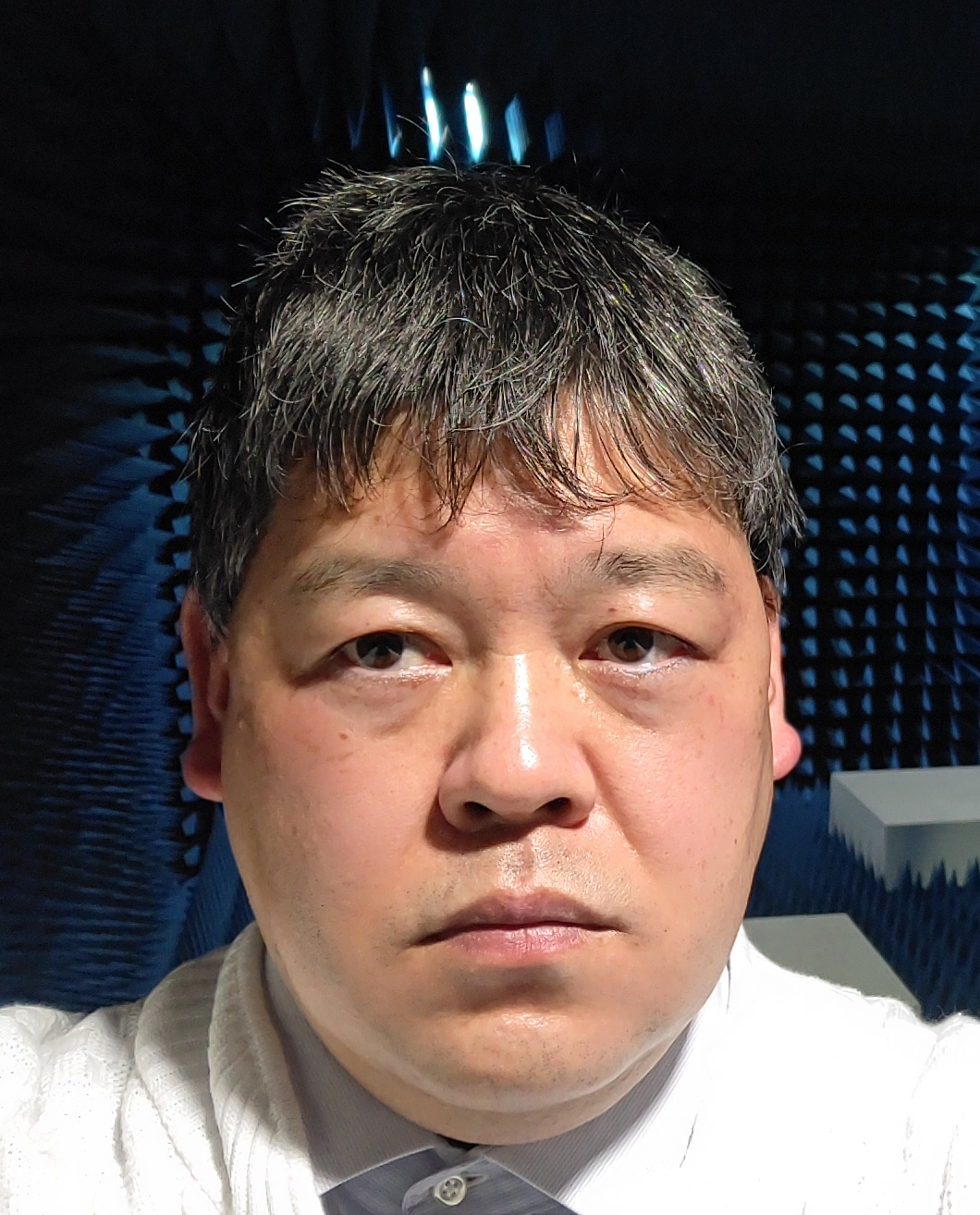
Biography:
Dr. Kazuto Yano received the B.E. degree in electrical and electronic engineering, and M.S. and Ph.D. degrees in communications and computer engineering from Kyoto University in 2000, 2002 and 2005, respectively. He was a research fellow of the Japan Society for the Promotion Science (JSPS) from 2004 to 2006. Since April 2006, he has been a researcher at Advanced Telecommunications Research Institute International (ATR). Currently, he is the head of Department of Wireless Communication Systems at Wave Engineering Laboratories, ATR. His research interests include space-time signal processing for interference suppression, MIMO transmission, and PHY/MAC cross-layer design of wireless communication systems for license-exempt bands. He received IEICE (the Institute of Electronics, Information and Communication Engineers) Communications Society Best Tutorial Paper Award in 2017, and ICAIIC 2019 Excellent Paper Award in 2019. He is a senior member of IEICE, and a member of IEEE. He serves as a Vice Chair of IEEE 802.19 Task Group 3a (TG3a).
Abstract:
Cybernetic avatar (CA) is a concept that includes not only remote avatars using robots and 3D images as proxies but also augmentations of physical/cognitive abilities of humans using ICT and robotics. Some of CAs are “teleoperated” through wireless communications to provide some interactive services to their users (service users). However, CAs' communication can be interrupted by blocking of radio waves and/or network congestion. For realizing stable teleoperation of CAs, it is necessary to deploy and configure wireless networks properly. However, for non-experts of wireless communications, it is a difficult task. Therefore, we are developing "CA reliability simulator" which is a system-level simulator of CA communications to assist the deployment of wireless networks for reliable teleoperation of CAs. This CA reliability simulator supports Private 5G (referred as “Local 5G” in Japan) and IEEE 802.11ax wireless LAN (Wi-Fi 6).
This simulator consists of following subsystems: radio propagation simulator, simulator of CA’s communications, and GUI for input/output. The radio propagation simulator simulates radio propagation between gNBs/access points (APs) and terminals by a simplified two-step radio propagation simulation using the ray-tracing method to enable simulation of a large-scale deployment scenario with hundreds of CAs. As the first step, we conduct ray-tracing simulation taking account for only static objects such as walls. Then, we apply shadowing effect due to moving objects such as CAs and service users that exist between a gNB/AP and a terminal. By this two-step simulation, we can avoid time-consuming ray-tracing simulation taking account for all objects time-by-time. The simulator of CA’s communications is based on EXata to evaluate QoS of CA’s communications over local 5G and wireless LAN. This communication simulator outputs channel occupancy rate of each gNB/AP as well as the QoS of each link. Over the GUI, we can locate CAs, service users and gNBs/APs. Then we can design movement paths of CAs and service users, and assign their application traffic flows for both uplink and downlink. The simulation results such as RSSI map and channel occupancy rate of each gNB/AP, and the reliability of CA operation based on QoS are shown graphically and intuitively.
This talk gives an overview of the developed CA reliability simulator.
Special Session 2: Integrated Communications and Sensing
Time: Jun. 4 (Wed.) 14:00-15:20
Chair: Prof. Yanki Aslan, TU Delft, The Netherlands
Chair: Dr. Takuto Arai, NTT, Japan
Speaker: Dr. Nitin Jonathan Myers, Delft University of Technology
Title: Scalable Sparse Channel Estimation for 6G: A Divide-and-Conquer Approach
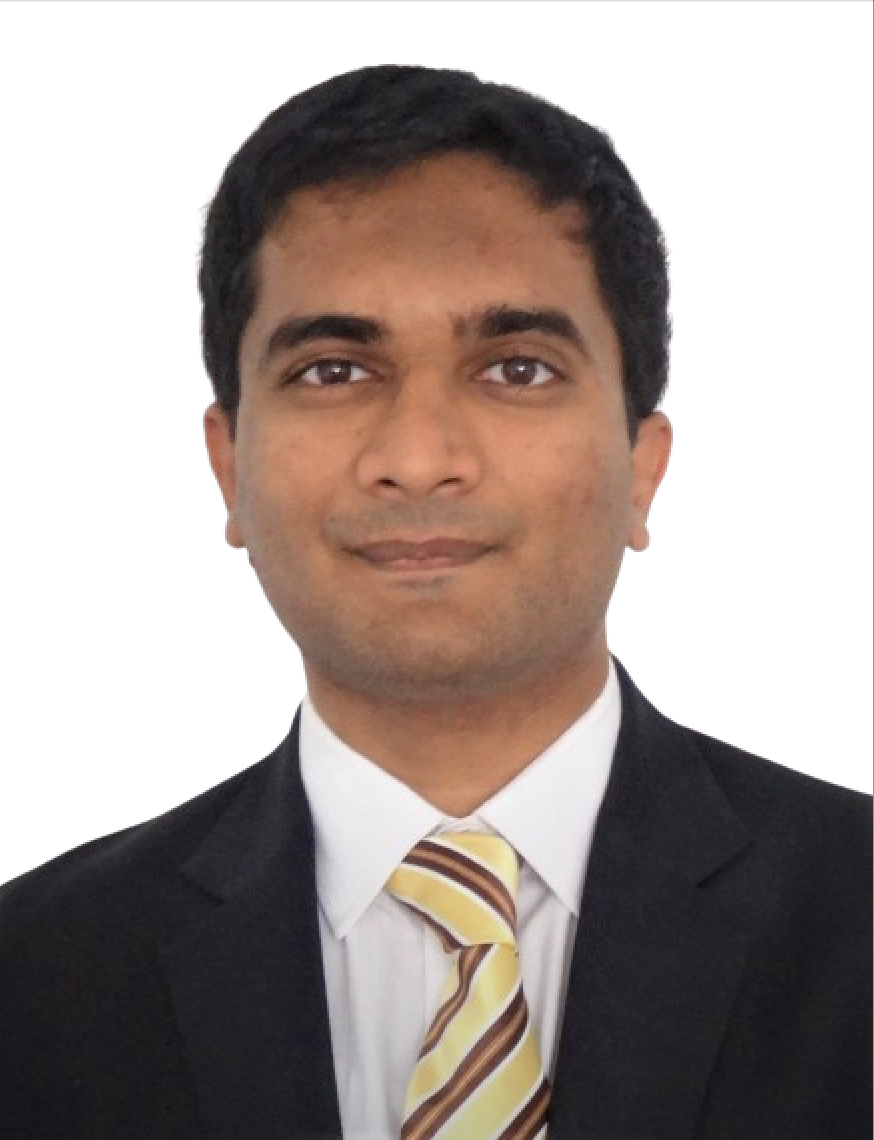
Biography:
Nitin Jonathan Myers received the B.Tech. and M.Tech. degrees in electrical engineering from Indian Institute of Technology (IIT) at Madras, Chennai, India, in 2016, and the Ph.D. degree in electrical and computer engineering (ECE) from The University of Texas at Austin (UT Austin), Austin, TX, USA, in 2020.,He is currently a tenured Assistant Professor at Delft Center for Systems and Control, Delft University of Technology (TU Delft), Delft, The Netherlands.,Dr. Myers received the DAAD WISE Scholarship in 2014 and a Silver Medal, Institute Merit Prize, in 2016 while at IIT Madras. At UT Austin, he received the University Graduate Continuing Fellowship from 2019 to 2020 and the 2018 and 2019 ECE Research Awards from the Cockrell School of Engineering. His research won the IEEE ICASSP 2020 Video Contest Runner-Up, the Best Student Paper Award at IEEE SPAWC 2022, and the Best Live Demo Finalist at IEEE Sensors 2024. In 2022, he was recognized as the Best Lecturer in the second year of the bachelor’s program in mechanical engineering at TU Delft.
Abstract:
As we transition to higher carrier frequencies and larger antenna arrays in 6G, wireless channel estimation faces two key challenges. First, the channel's dimensionality increases significantly, making classical methods computationally prohibitive. Second, hardware constraints may limit the way channel measurements can be acquired.
In this talk, I will present a divide-and-conquer approach for sparse channel estimation in high-dimensional settings. To facilitate our method, we develop hardware-compatible comb-beamformers and distributed sparse recovery algorithms for spatial channel estimation. Through numerical results and analysis, I will demonstrate how this approach holds promise as a viable solution for 6G.
Speaker: Prof. Hai Lin, Osaka Metropolitan University
Title: Exploring Waveform Design in the Delay-Doppler Domain for ISAC

Biography:
Hai Lin received the B.E. degree from Shanghai JiaoTong University, China, in 1993, the M.E. degree from University of the Ryukyus, Japan, in 2000, and the Dr. Eng. degree from Osaka Prefecture University, Japan, in 2005. In 2000, he joined the Graduate School of Engineering, Osaka Prefecture University (renamed Osaka Metropolitan University in 2022), where he is currently a Professor. His research interests include signal processing for communications, wireless communications, and statistical signal processing. He served several times as a Technical Program Co-Chair for the Signal Processing for Communications Symposium and the Wireless Communications Symposium of the IEEE International Conference on Communications (ICC) and IEEE Global Communications Conference (GLOBECOM). He was the Chair of the Signal Processing and Communications Electronics Technical Committee of the IEEE Communications Society from 2015 to 2016. He was the Chair of the IEEE Communications Society Kansai Chapter from 2022 to 2023. He was an Associate Editor for the IEEE Transactions on Wireless Communications. He is currently serving as an Associate Editor for the IEEE Transactions on Communications and the IEEE Transactions on Vehicular Technology.
Abstract:
Integrated sensing and communication (ISAC) is considered a key feature of next-generation wireless communication systems, with waveform design being a central challenge. The objective is to develop waveforms that effectively support both communication and sensing. Traditional modulation waveforms are optimized for communication but may not be ideal for sensing, while radar waveforms are designed for sensing and are often inadequate for communication. Recently, delay-Doppler (DD) domain waveforms have emerged as a promising solution for ISAC. In this talk, we first revisit the fundamentals of digital modulation waveforms, emphasizing pulse design for carrying information-bearing digital symbols. We then explore the challenges of DD domain waveform design, particularly the constraints imposed by the uncertainty principle. Next, we show that these constraints can be circumvented in practical systems with finite bandwidth and duration. We then introduce the DD domain orthogonal pulse (DDOP) and explain how it addresses these constraints. Finally, we present DDOP-based orthogonal delay-doppler division multiplexing (ODDM) modulation and its potential benefits for ISAC.
Speaker: Dr. Kallol Das, TNO
Title: ISAC in the 6G Era: Charting the Path to Standardisation
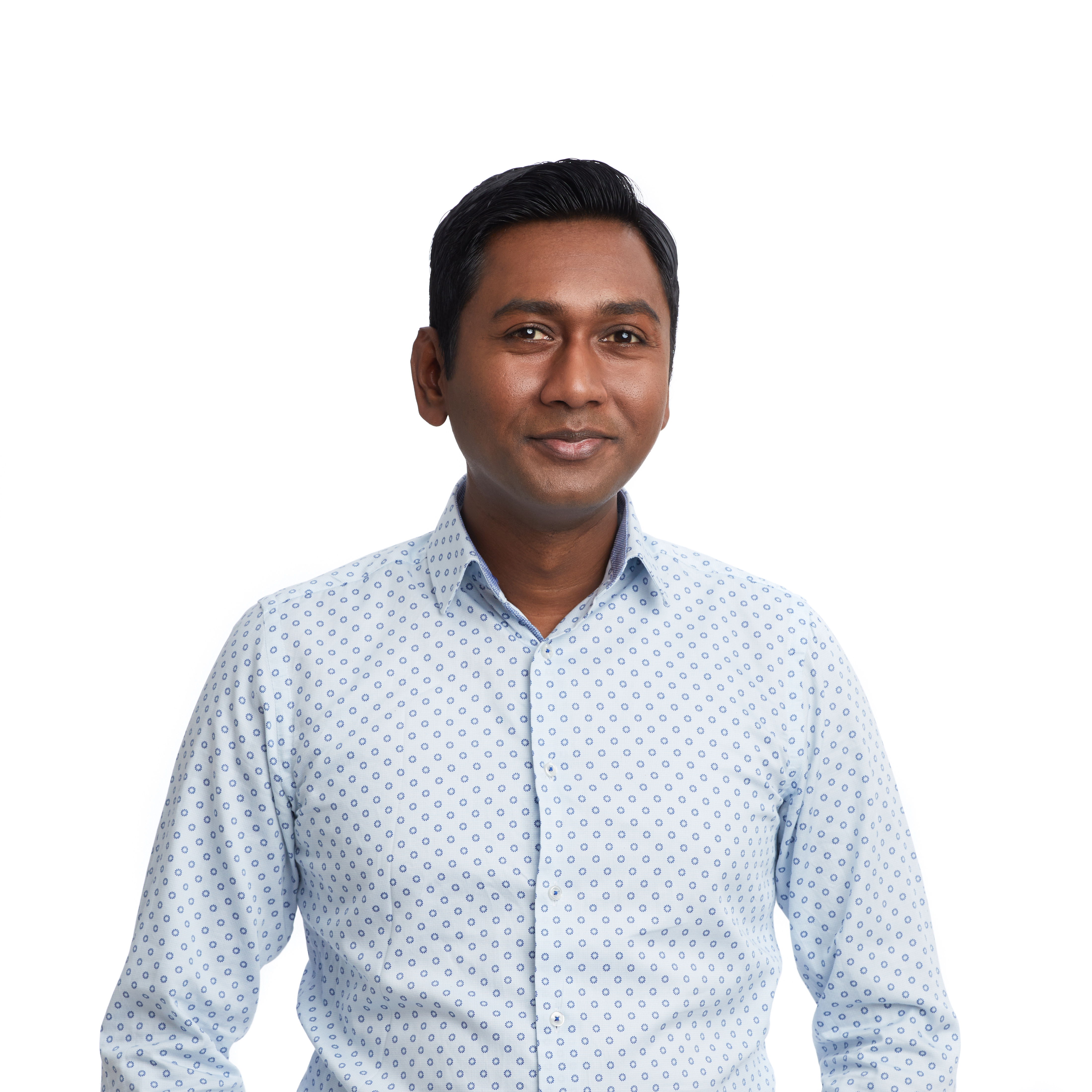
Biography:
Dr. Kallol Das is a Senior Scientist at the Netherlands Organisation for Applied Scientific Research (TNO), where he leads cutting-edge research in radio network management for 5G and future 6G systems. His core expertise spans Integrated Sensing and Communication (ISAC), the Internet of Things (IoT), and advanced localization technologies. Dr. Das plays a pivotal strategic role in strengthening TNO’s leadership in next-generation wireless technologies.
Throughout his career, he has authored numerous scientific publications and holds multiple patents in wireless communications, reflecting a strong commitment to both academic rigor and technological innovation. Dr. Das is also an active contributor to global standardization efforts through his involvement with key bodies such as 3GPP and ETSI, helping shape the evolution of global communication standards.
Abstract:
As we move toward the 6G horizon, Integrated Sensing and Communication (ISAC) is emerging as a transformative paradigm, promising to unify the traditionally separate domains of wireless communication and sensing. This invited talk offers a deep dive into the evolving standardisation landscape of ISAC, with a spotlight on the critical contributions of 3GPP and ETSI in shaping its future.
We begin by exploring the compelling rationale behind ISAC’s central role in 6G, driven by both technological imperatives and emerging societal needs. From UAV detection and traffic safety to healthcare and industrial automation, we’ll examine key use cases currently under study by the global industrial community—demonstrating how ISAC is poised to redefine performance expectations across diverse sectors. We’ll also highlight the research efforts underway in the Dutch 6G flagship program, Future Network Services (FNS), which is actively investigating ISAC technologies and their integration into 6G network architecture.
The talk will then highlight major standardisation developments aimed at addressing core architectural and protocol-level challenges, including spectrum coexistence, synchronization, and waveform design. We will assess how standardisation bodies are tackling these issues and identify critical gaps where further research and cross-sector collaboration are essential.
Attendees can expect to gain a well-rounded perspective on the current state of ISAC standardisation, along with insights into emerging research directions and how academic innovation might align with industry priorities to support the broader vision of 6G.
Industry Session
Time: Jun. 4 (Wed.) 15:40-17:00
Chair: Prof. Osamu Takyu, Shinshu University, Japan
Speaker: Dr. Koji Yamanaka, Information Technology R&D Center Mitsubishi Electric Corporation
Title: Introduction of Development Approaches and R&D Efforts about B5G/6G for Industrial Utilization
TBD
Biography:
Koji Yamanaka received his B.S. degree in electric engineering and M.S. and Ph.D. degrees in electronic engineering from the University of Tokyo, Japan, in 1993, 1995, and 1998, respectively. In 1998, he joined the Information Technology Research and Development Center, Mitsubishi Electric Corporation, Kamakura, Japan, where he engaged in development of GaAs low-noise monolithic microwave integrated circuit amplifiers and GaN high-power amplifiers.
From 2012 to 2018, he has managed the Amplifier Group, in Mitsubishi Electric Corporation.
He was in charge of the civil application GaN device business section in from 2018 to 2020.
From 2022, he is the General Manager of Microwave Electronics dept. and responsible for micro- wave technology R&D in Mitsubishi Electric Corp. He is a senior member of IEICE. He is the recipient of the Best Paper Prize of GAAS2005.
Abstract:
In order to achieve practical social implementation of B5G/6G, it is extremely important to establish a position as a platform that supports the solution of social issues of various industries and to promote technological development that serves as the source of social and economic values. We propose an approach to develop this platform and have been promoting research and development of key technologies.
Special Session 3: NTN and TN Collaboration Technology
Time: Jun. 5 (Thus.) 10:45-12:05
Chair: Dr. Salvador Mercader, ESA, The Netherlands
Chair: Prof. Satoshi Tsukamoto, Tohoku University, Japan
Speaker: Dr. Stefano Cioni, European Space Agency
Title: The 3GPP NTN standardization journey: from 5G to 6G
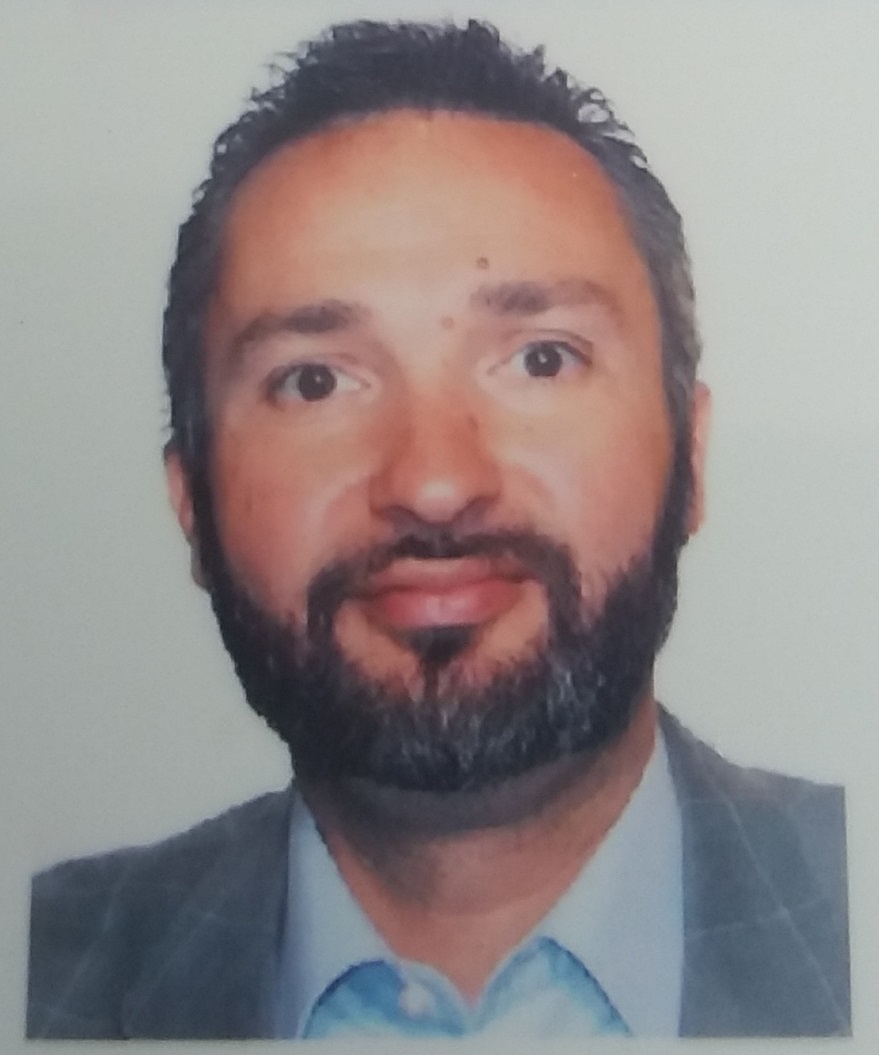
Biography:
"Stefano Cioni was born in Imola (Italy) on October 12, 1973. He received the Dr.Ing. degree in telecommunication engineering and the Ph.D from University of Bologna, Italy, in 1998 and in 2002, respectively.
In 2010, he joined the European Space Agency, Noordwijk, The Netherlands, where he is currently a telecommunication systems engineer within the Radio Frequency Systems, Payload and Technology Division.
Since September 2016, he has been attending the 3GPP RAN plenary and RAN-WG1 meetings, with the specific interest to support non-terrestrial network (NTN) aspects and to facilitate the 5G terrestrial/satellite networks integration.
He has co-authored more than 100 papers and scientific conference contributions, and he is a co-recipient of the Best Paper Award at IEEE ICT 2001 and at IEEE ASMS/SPSC 2012.
Dr. Cioni has been elevated to Senior Member of the IEEE Society in August 2017. Dr. Cioni has selected as recipient of the IEEE ComSoc Satellite and Space Communications Technical Recognition Award 2020."
Abstract:
In March 2017, the first study item on Non-Terrestrial Networks (NTN) was approved. Today, the latest 5G Release 17 will be remembered as the first that specifies a set of enhancements and adaptations to support mobile broadband services via satellite direct access. This speech will retrace this NTN journey in the 3GPP standardization groups, starting from the service requirements and system architecture deployments, including the challenges due to the satellite propagation environments, and lately reviewing the new technical enhancements introduced in Release 17. Finally, the presentation will conclude with the highlights on the emerging concepts and directions towards to a unified 6G network encompassing terrestrial and satellite mobile systems.
Speaker: Prof. Noriharu Suematsu, Tohoku University
Title: R&D of Q/V-Band DBF Antenna and Transceiver Technologies for Future Japanese LEO Constellation SATCOM

Biography:
Noriharu Suematsu received his B.S., M.S., and Dr. Eng. degrees in electronics and communication engineering from Waseda University, Tokyo, Japan.
In 1987, he joined the Mitsubishi Electric Corporation, Japan, where he was engaged in research and development on microwave and millimeter-wave solid-state circuits including RFICs, linearizers, transceivers for cellular phones, ITS, and satellite communication systems. From 1992 to 1993, he was a Visiting Researcher of the University of Leeds, Leeds, U.K. Since 2010, he has been a Professor with the Research Institute of Electrical Communication (RIEC), Tohoku University, Sendai, Japan. His current interests are in next generation wireless systems and hardware for both terrestrial and non-terrestrial networks. He was the recipient of the Institute of Electronics, Information and Communication Engineers (IEICE) Electronic Society Award in 2012 and Asia Pacific Microwave Conference (APMC) award in 2021. He is a Fellow of the IEICE and is serving as the IEEE Japan Council Chair during 2025-2026. He is a director of IT21 center of RIEC and has been conferred the title of Tohoku University Research Professor.
Abstract:
For future Low Earth Orbit (LEO) constellation satellite communication, explore of millimeter-wave band is required. To achieve flexible and multiple beamforming functionality, an on-board digital beam forming (DBF) array antenna and its transceiver should be developed. In this presentation, outline of our targeted future Japanese Q/V-band LEO constellation satellite communication (SATCOM) system and its antenna / transceiver which is based on direct digital RF are introduced. In the case of digital rich direct digital RF transceiver, the antenna integrated RF modules can be minimized whereas the computation power of digital signal processor becomes a problem. To solve this problem, a novel distributed scalable DBF antenna system is proposed. In the case of distributed DBF antenna, a conventional DBF array antenna having thousands of antenna elements divided into several unit DBF array antennas having 256 antenna elements each. This is because, 256 antenna elements are enough to achieve the required beam spot size for the future Japanese LEO constellation on-board array antenna. The proposed distributed DBF antenna can dramatically reduce the computation power of both DBF calculation and 1-bit bandpass delta sigma modulation calculation. The proposed DBF antenna has a scalability according to the satellite size by changing the number of unit DBF array antennas on-board.
Special Session 4: Low-Power and Efficient sub-THz Communications with Low-Resolution ADCs
Time: Jun. 5 (Thus.) 14:00-15:20
Chair: Dr. Anastasia Lavrenko, UTwente, The Netherlands
Chair: Prof. Koji Ishibashi, The University of Electro-Communications, Japan
Speaker: Prof. André Kokkeler, University of Twente
Title: Approximate Computing in Radio Astronomy

Biography:
After obtaining his master degree in 1988, André B. J. Kokkeler has worked more than 6 years at Ericsson as a system engineer and 8 years at the Netherlands foundation for research in astronomy (ASTRON) as a scientific project manager. In 2003 he joined the University of Twente where he obtained his PhD degree in 2005. He currently is appointed as a Full Professor at the University of Twente where he is chairing the Radio Systems Group.
He has a background in telecommunication, mixed signal design and signal processing architectures. Currently, his main interest lies in the area of the design of low-power architectures for telecommunications and computationally intensive applications. He is involved in research projects, sponsored by the Dutch and European governments and industry. His research focusses on efficient realization of digital signal processing for communications.
Abstract:
Large scale Radio Telescopes for Radio Astronomy highly depend on the availability of large (digital) processing capacities for imaging. Estimates concerning power efficiency for future Radio Telescopes lead to anticipated power consumption numbers beyond feasibility. To reduce the power budget, the use of approximate multipliers within the correlator is explored. A baseband equivalent executable model of a radio synthesis telescope is constructed to assess the effects of approximate multipliers. Besides ideal multipliers with floating point accuracy, the use of accurate 8-bit multipliers and 4 different types of approximate multipliers is explored. For each of these multipliers, the energy efficiency of an individual multiplier is known and used to determine the energy efficiency improvement of a correlator when using approximate multipliers. The effects of approximation are quantified by 3 metrics: Signal-to-Noise-Ratio (SNR), Spurious-Free-Dynamic-Range (SFDR) and Root-Mean-Square (RMS) level derived from maps constructed by the executable model based on an empty sky with only a single point source. This is considered to be the worst case scenario. For illustration purposes, a more realistic input is processed by the model as well. The metrics have been determined based on different SNR levels at the input of each antenna element.
Speaker: Prof. Takumi Takahashi, Osaka University
Title: Bayesian Receiver Design for Massive MIMO-OFDM Systems with Low-Resolution ADCs
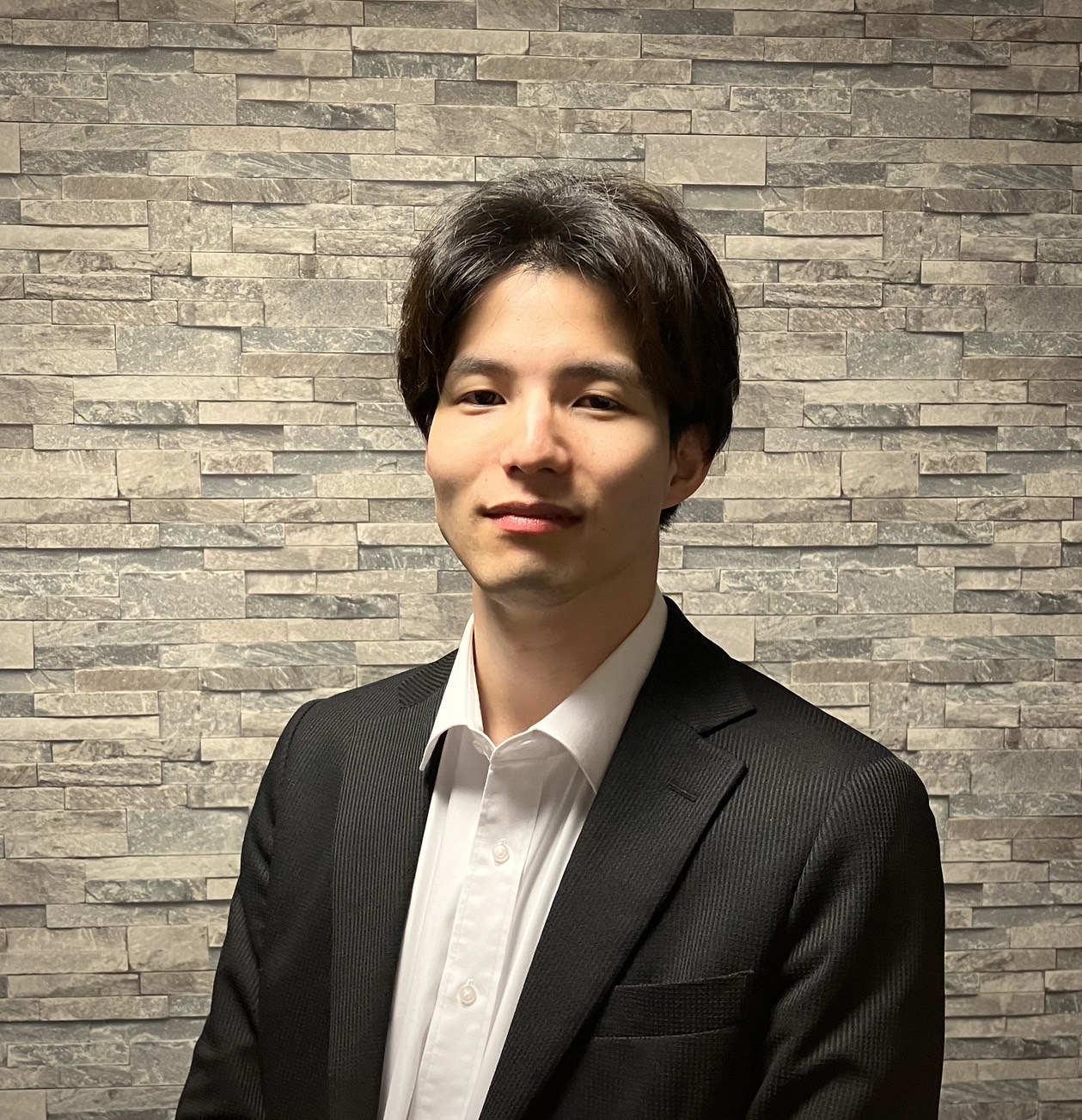
Biography:
Takumi Takahashi (Member, IEEE) received the B.E., M.E., and Ph.D. degrees in communication engineering from Osaka University, Osaka, Japan, in 2016, 2017, and 2019, respectively. From 2018 to 2019, he was a Visiting Researcher at the Centre for Wireless Communications, University of Oulu, Finland. In 2019, he joined the Graduate School of Engineering, Osaka University, where he is currently an Associate Professor. He has published more than 20 research papers and 50 conference papers. His current research interests include Bayesian inference, belief propagation, signal processing, and wireless communications. He received the 80th Best Paper Award from IEICE and the 2019 and 2023 Best Paper Awards from the IEICE Communication Society. He was certified as an exemplary reviewer of IEEE WIRELESS COMMUNICATIONS LETTERS in 2023.
Abstract:
Millimeter-wave (mmWave) and sub-THz multiple-input multiple-output orthogonal frequency-division multiplexing (MIMO-OFDM) technology is a promising solution for achieving high data rates and low latency in next-generation wireless communication systems. Although compact antenna elements can be densely arranged in mmWave and sub-THz base stations (BSs), the primary challenges to their practical application are increased power consumption and implementation costs; this constraint inhibits the deployment of a complete radio-frequency (RF) chain for each antenna. In particular, analog-to-digital converters (ADCs) and data interface cards are power-hungry devices. One approach to addressing this issue is to reduce the resolution of the ADCs to a minimal level; however, this introduces significant information loss, making subsequent essential domain conversion operations, such as fast Fourier transform (FFT) and inverse FFT (IFFT), challenging. Consequently, signal processing tasks, such as channel estimation (CE) and data detection (DD), cannot be performed within the designated signal space, e.g., the beam-delay or antenna-frequency domain. In addition, obtaining accurate channel state information (CSI) requires excessively long pilot sequences to compensate for the information loss, leading to a substantial performance degradation due to communication overhead.
In this lecture, I will present a Bayesian inference-based receiver design that achieves high-precision CE and DD while minimizing overhead in the presence of low-resolution ADCs. This framework provides a robust solution to the challenges posed by severe quantization errors in massive MIMO-OFDM systems with low-resolution ADCs, facilitating practical implementation in future wireless communication systems.











